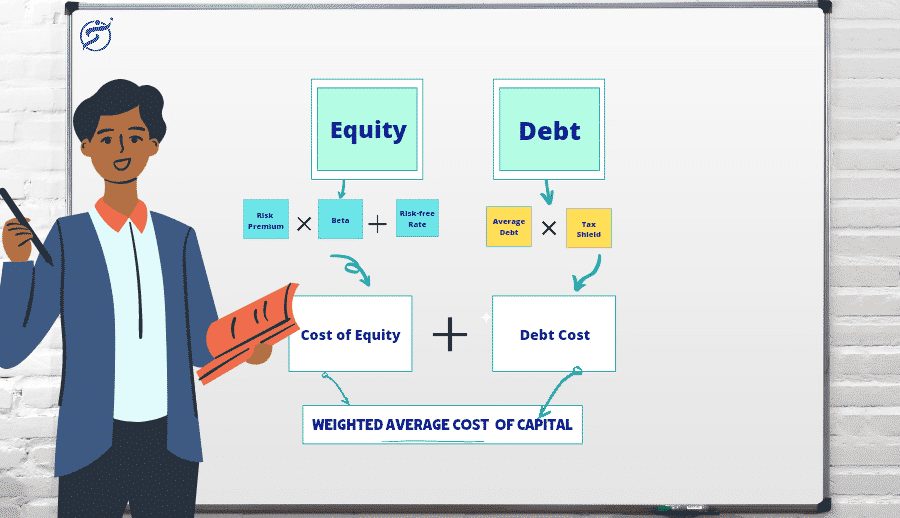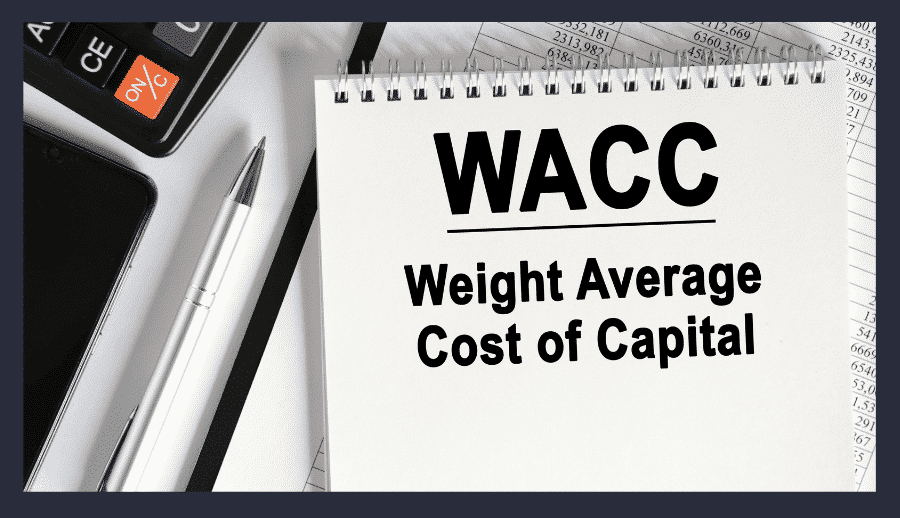WACC Formula: The Basics of WACC And How It’s Calculated
 SCFO
SCFO- Jul 23, 2021
- SMEs
Weighted Average Cost of Capital formula is an important part of understanding the financing mix for a company.
Learn how the WACC formula works and how to calculate it.
WACC Formula and Definition
The WACC (Weighted Average Cost of Capital) is an important part of the capital structure and can determine a company’s financing mix such are, company’s various shares and its debt.
The WACC formula serves as a measurement tool for what a company should spend on debt and equity.
Calculating the WACC may sound complex, but it’s really not that difficult to do if you know how it’s done correctly.
It all starts with figuring out the cost of capital for each type of funding you’re considering, then plugging these numbers for calculating the WACC formula. ( CFO Services for Startups in India )
What is the WACC Formula?
The WACC meaning is derived by dividing a company’s weighted average cost of debt (used for issuing debt) by its average earnings before interest, tax, depreciation and amortization (EBITDA), or EBITDA. EBITDA is considered the metric that determines whether or not a company is getting the most out of the revenue it generates.
EBITDA is the amount of money a company gets before it has to pay for the things that it purchases to produce or sell its products.
This is what allows companies to pay shareholders more in dividends than they could if they spent on major capital expenditures such as new facilities. When Calculating WACC the formula is often expressed as a percentage.
The weighted average cost of capital (WACC) is a measure of how expensive it is to borrow money or raise capital. Additionally, the WACC calculation looks at one part of the cost of equity capital and one part of the cost of debt capital.

Weighted Average Cost of Capital
The higher the weighted average cost of capital, the more expensive it is to borrow money. With the WACC formula, we can calculate the cost of equity and the cost of debt. Consequently, the WACC value plays a crucial role in determining the Discounted Cash Flow (DCF) of a company.
Cost of Debt
Debt capital is the money that a business borrows from a lender to finance its operations. It has an agreement that it must be paid back within an agreed-upon timeframe.
So, when you say Cost of Debt, this means you are talking about the interest rate applicable on borrowed money. You can say, this interest rate is also called the Cost of Debt.
The information must be available under your company’s balance sheet. When you have the details you can use the following formula to find out the cost of debt. (Interest rate) × (1-tax rate) / total debt Here; (1-tax rate) is used as a simple formula to get the post-tax value. Tip: You can use the formula 1 / (1-tax rate) to find out the pre-tax value.
Cost of Equity
Equity capital is an important element for any company.
It’s the money shareholders have invested in exchange for shares of stock and also the earnings they’ve reinvested. The cost of equity capital is the rate of return investors expect to receive if they invest in a particular company.
You can use CAPM to calculate the cost of equity; Use this formula to calculate the Cost of Equity= Risk-free rate of return + Beta × (market rate of return – the risk-free rate of return) Here; Beta is the measurement level of risk. Alternatively, you can also use the DDA method to find out the cost of equity.
DDA stands for Dividend Discount Model. Cost of Equity = Dividend for all shares by next year’s projection ÷ Price of current stock + Growth rate of the Dividend
How to calculate WACC (Weighted Average Cost of Capital)?
Now, that you are aware of the basic requirements, you are ready to fly it. Using the above value of the cost of debt and cost of equity you will be able to understand WACC.
However, it takes time and practice to become good at it. WACC = {Interest expenses × (1-tax rate) / total debt}+ {risk free rate of return + beta × (market rate of return – risk free rate of return)}
Here; You could also use the DDA approach instead of using “CAMP” in the WACC formula calculation.
Can This Formula be Used for Taking Decisions?
The Weighted Average Cost of Capital or WACC is a key concept in business valuation and assists with calculating your business’s Net Present Value. It is also a good method to assume investment opportunities by evaluating current market value in similar industries.
The weighted average cost of capital (WACC) is the rate a company pays on average. It is estimated by calculating and relating the cost of each type of financing.
So, what’s the bottom line?
The concept of WACC is important for business owners, who need to make financial decisions. Whether it’s the same or different risk project you’re evaluating, and economic value calculation or any of the concepts we’ve discussed so far.
What is The COST of Capital Meaning?
Suppose you have $1 million in cash available, and your initial cost of capital is 10%. Now, you plan to secure a $50 million loan to construct a new building. As part of this strategy, you intend to incorporate the company’s existing debt and inject additional equity.
You still want to calculate the cost of capital so that you know how much to spend to build the new building.
Your original cost of capital is 10% (10% debt cost and 10% equity cost). So now you take the money out of the bank and add 10% ($50 million) to it to fund the building. Your cost of capital is now 20%.
Oh, that became a little hazy to understand, Let’s understand that with the cost of capital definition instead;
The cost of capital is the reward you receive for undertaking a risky investment. Essentially, it’s the return you require to consider such an investment.
Making it simpler to understand, you can remember this short sentence. In order to make a capital project, you need the right return!
You got this!
When analysts and investors talk about the cost of capital, they’re not talking about how much it costs you to buy a coffee.
They’re talking about the weighted average of a company’s, cost of debt, and cost of equity blended together.
Know More: Startup Valuation India
Nominal vs Real WACC

The difference between nominal and real free cash flows can be quite confusing. In order to calculate the correct discount rate, you need to know whether or not inflation is involved.
Every business structure has its own unique costs associated with its various financing methods. So, when you look at the WACC formula, you’ll need to understand its various components.
The nominal WACC is the most common in practice, representing the cost of equity in the worst-case scenario.
Before we get into the general definition, you should prepare to understand that in a more clear approach. Let’s understand the key points first.
Nominal Data: Nominal data is the simplest way to scale data. Nominal data can be analyzed using the grouping method, which allows for the grouping of variables into categories. The data can then be presented in many meaningful ways, such as a pie chart, visually represented graph, etc.
Inflation Data: An increase in the price of goods over a set period of time is referred to as the term Inflation. It can be seen as equivalent to a decrease in the value of the currency. Source information; ipart (opens in new tab).

